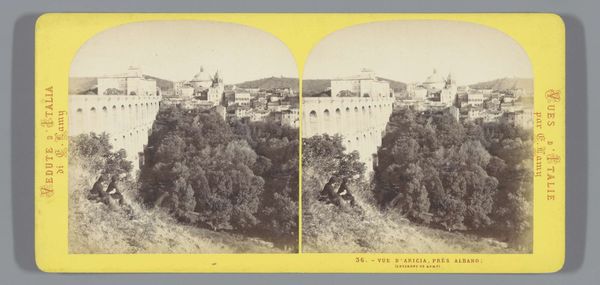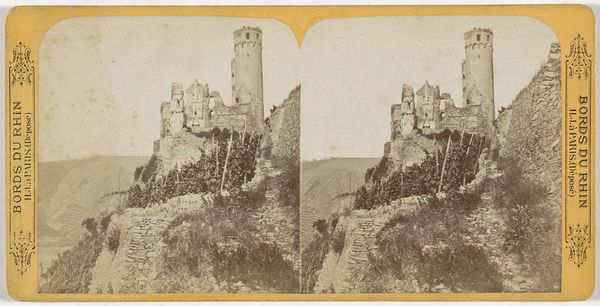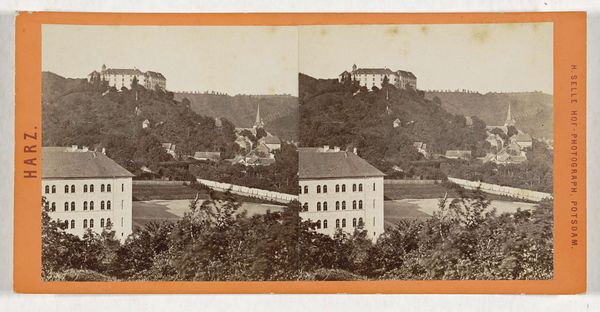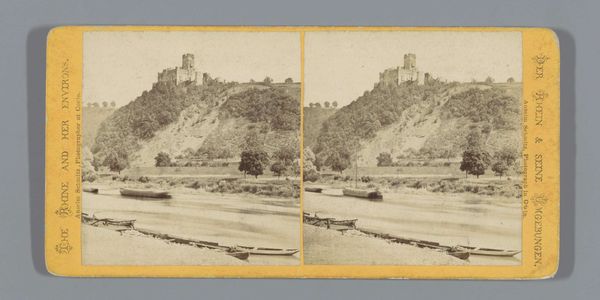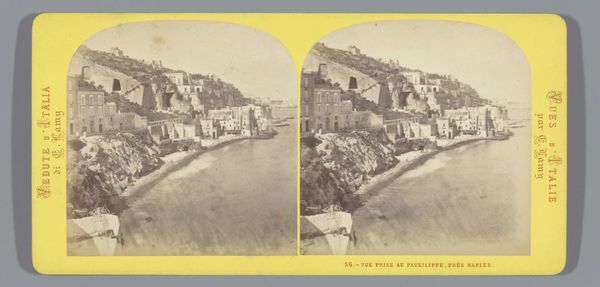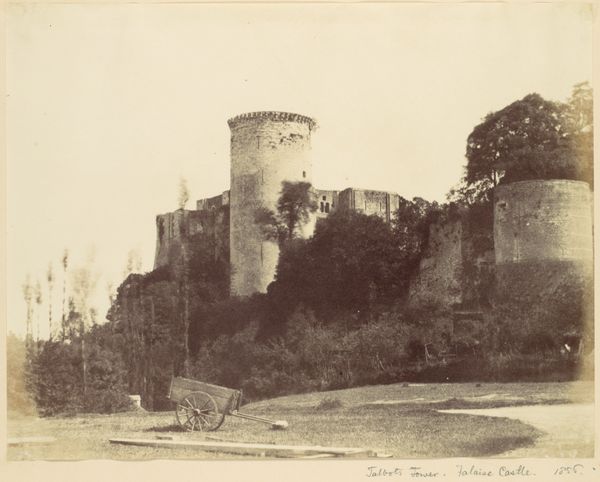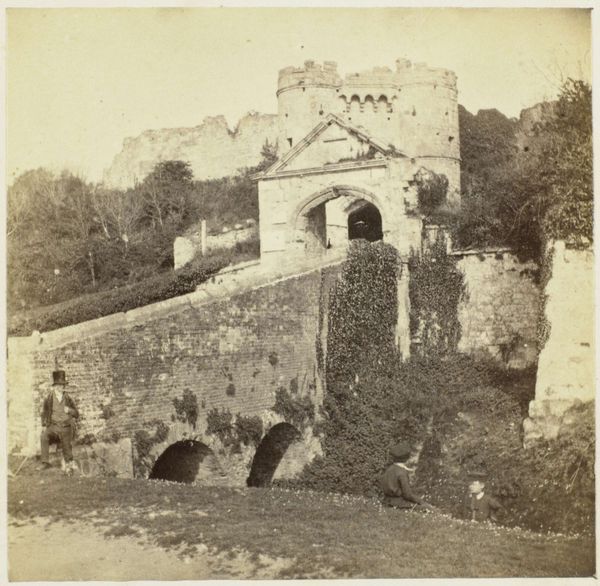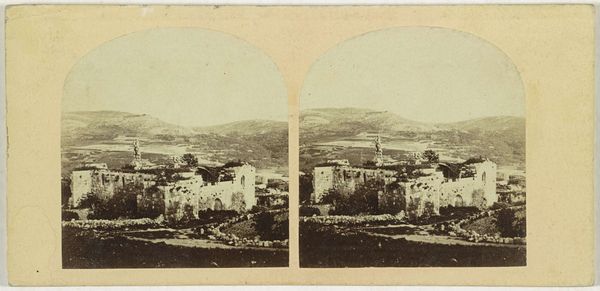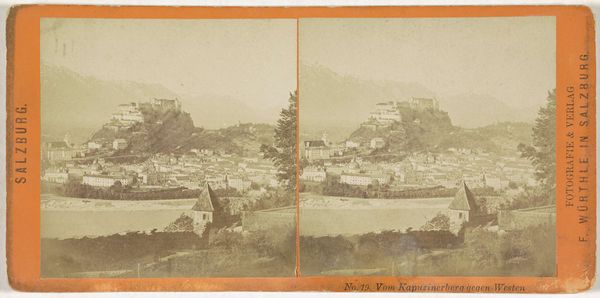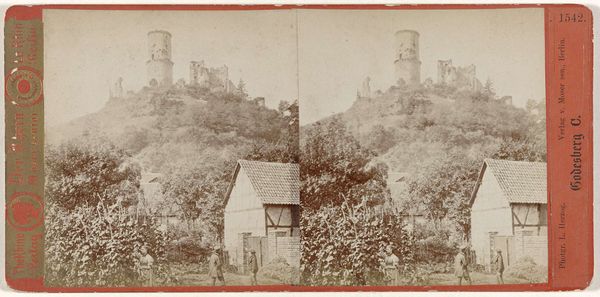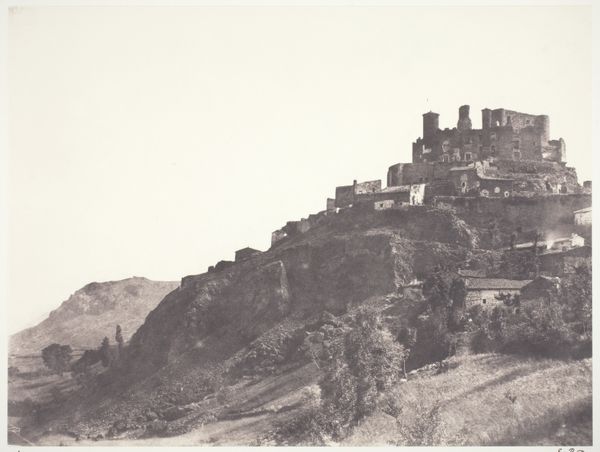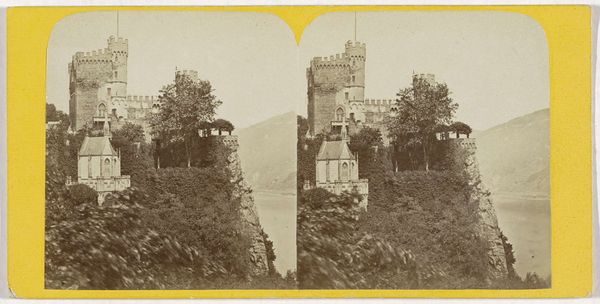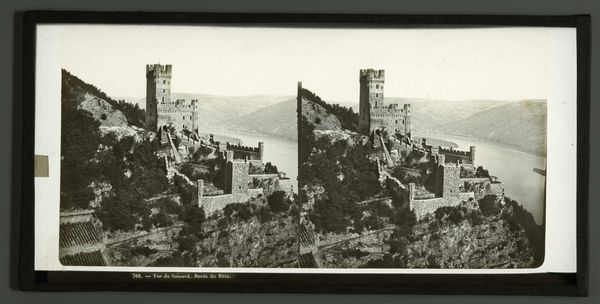
Dimensions: height 85 mm, width 174 mm
Copyright: Rijks Museum: Open Domain
Curator: Ah, yes, "Gezicht op de vesting Hohensalzburg," or "View of the Hohensalzburg Fortress," captured in 1868 by Charles Gaudin. It's a photographic stereoscopic card. There’s something haunting, almost dreamlike, about the light. What do you see? Editor: The fortress dominates the scene; it’s so imposing on top of that hill. It reminds me of something out of a fairytale… or maybe a nightmare, actually. So what kind of story is this image trying to tell? Curator: I love that duality! It *is* both. It whispers of Romanticism’s obsession with the sublime – the terrifying yet beautiful power of nature and history. The very process of photography, still relatively new then, attempted to capture that truth but perhaps even amplified it. Notice the solitary figure on the path, almost overwhelmed by the scale of the fortress? It hints at man’s insignificance against the weight of time and architecture. Isn't it also romantic that viewers would see the photograph in stereoscope giving it 3D life? How wild is that! Editor: It is cool. So you're saying the slightly ominous feeling I'm getting is intentional? The artist *wanted* that unsettling feeling? Curator: Perhaps "intention" isn’t quite the right word. Gaudin was channeling something. Early photography could capture light in very soft, diffused ways, adding to its dreamlike effect. Now what do *you* think is this dream's message? Editor: Well, if it's not just about historical record and actually making a statement… perhaps it is about acknowledging something we are often prone to forget, which is humanity's place within the grand scheme of history and nature. I will look at photos differently from now on. Curator: Yes! Precisely. This image remains poignant – not just as a historical document, but as a space to explore our own feelings and experiences reflected in light and stone.
Comments
No comments
Be the first to comment and join the conversation on the ultimate creative platform.
